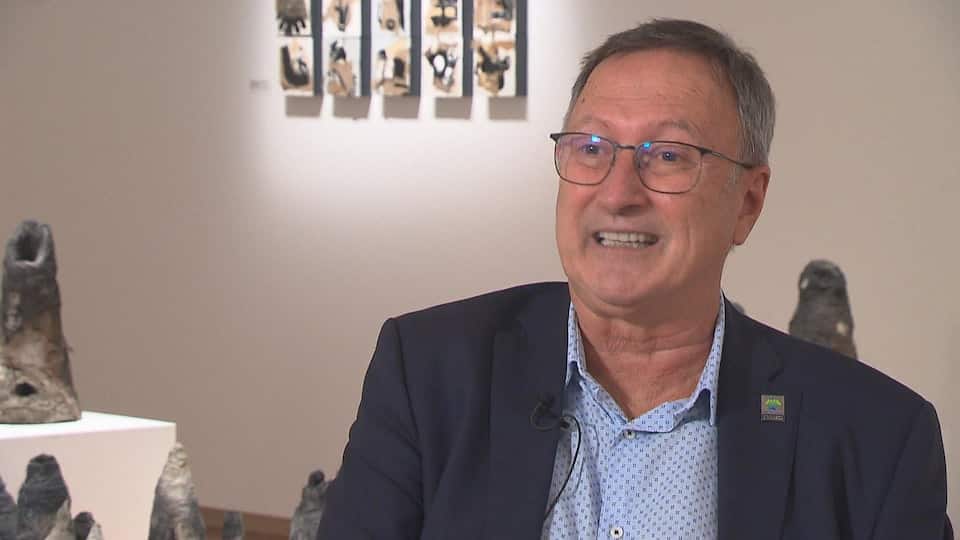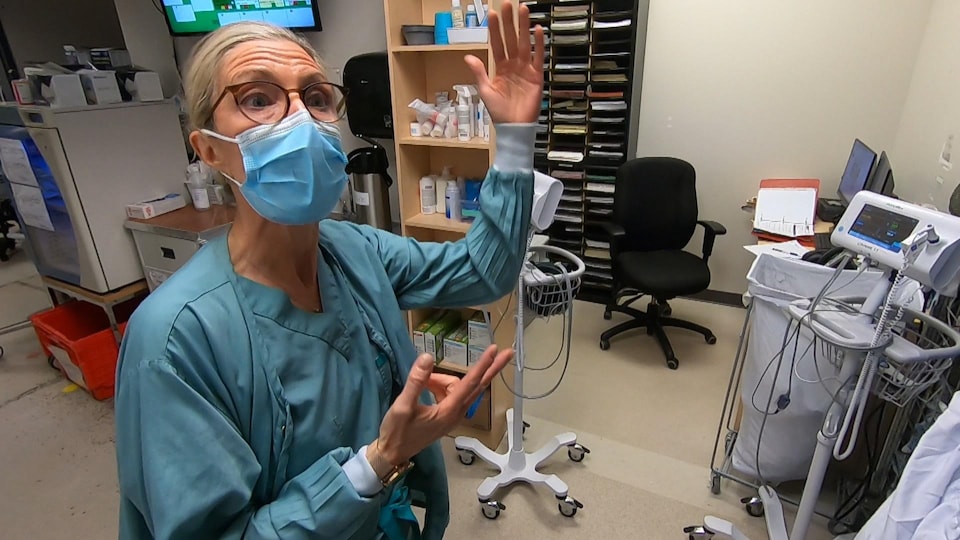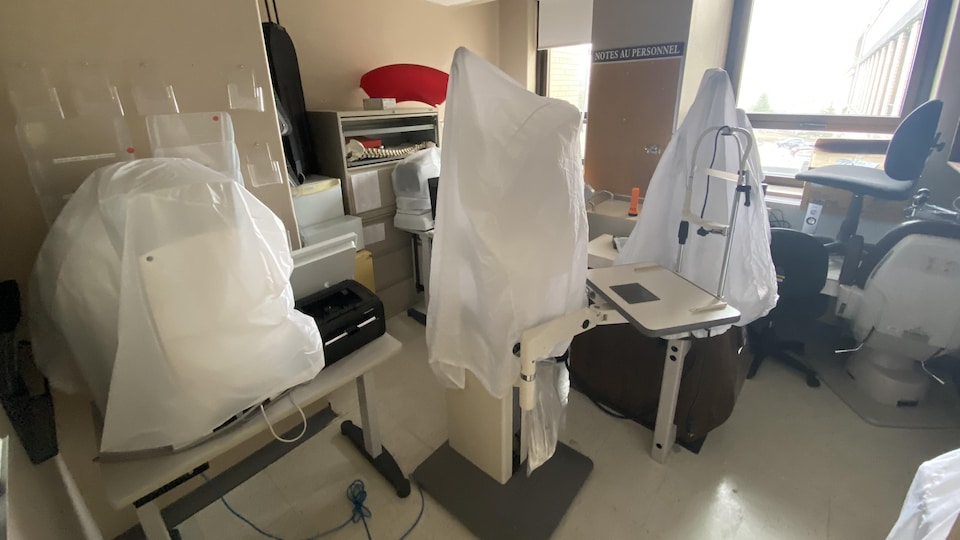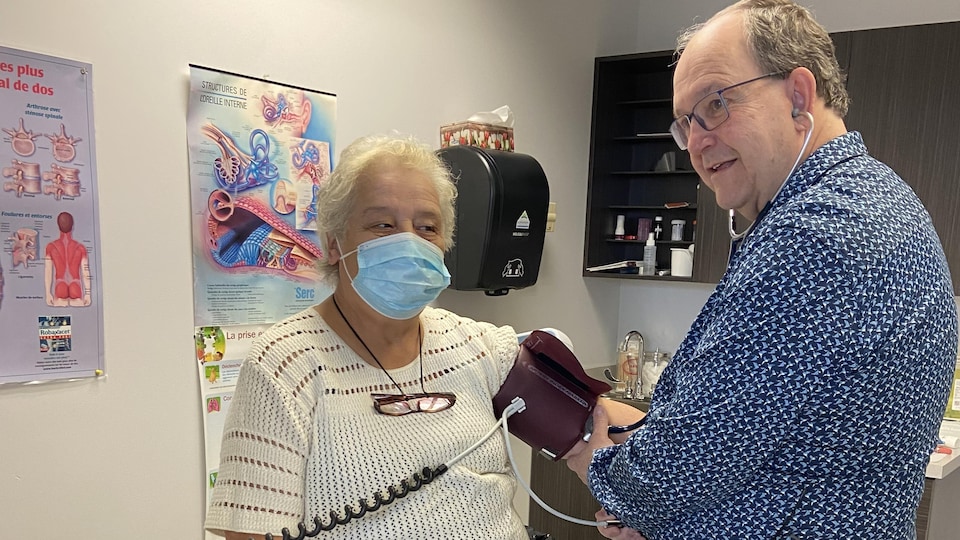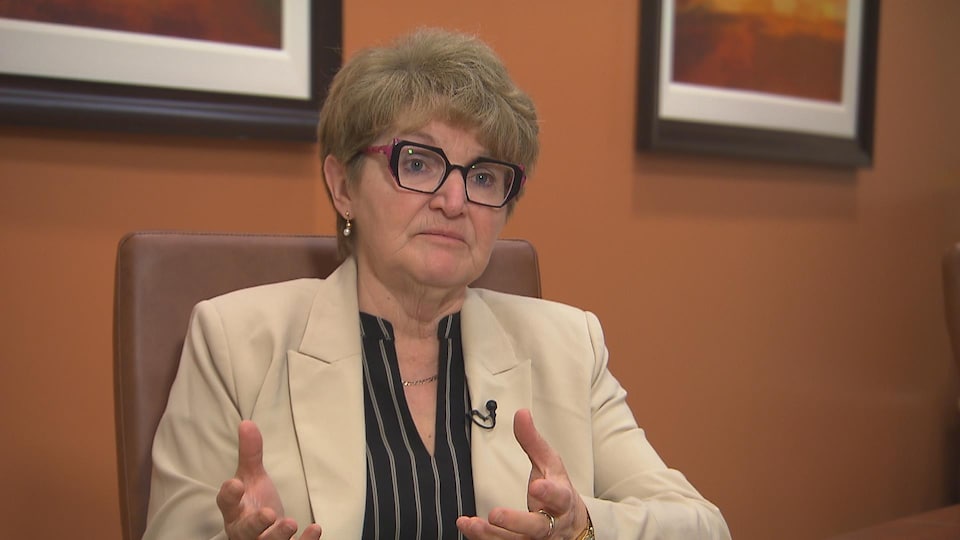Everyone will benefit from these new facilities at Hôpital de Mont-Laurier, both users and staff, since they will also improve the efficiency of the work of the health professionals who work there.
he said.
The work was to make it possible in particular to eliminate multiple bedrooms and to provide all the bedrooms with bathrooms accessible to people with reduced mobility. to ensure more comfort and privacy and to prevent the risk of infection
.
A design that goes without saying in the 21st century, with delivery scheduled for 2023.
However, according to the documents consulted by Radio-Canada, the work remains in planning
will not start before autumn 2023 and will be finalized in four years, in 2026.
We have the feeling of being completely abandoned […] to be seen as numbers
launches Daniel Bourdon, mayor of Mont-Laurier and prefect of the MRC Antoine-Labelle.
We defend our file, because if we wait for the CEO of the CISSS des Laurentides, we will see each other again in ten years and we will be at the same level as we are now.
he laments.
Mr. Bourdon has been involved in schools and municipal politics in the region for 40 years.
According to him, the Barrette reform of the health network in 2015 has left its mark.
For example, we invested $300,000 a year in a mechanism to recruit students from the region early for the health network, but that disappeared with the mergers.
regrets the prefect of the region.
The MRC Antoine-Labelle occupies two-thirds of the territory of the Laurentians. Its population of approximately 36,000 inhabitants remains stable, but is among the most aging in Quebec. Not to mention poverty, which affects 20% of citizens.
Patients in the hallway
During our visit, the small emergency department of the Mont-Laurier Hospital was receiving 12 patients on stretchers that day. More than double its capacity.
Some were in the hallway between dividing curtains.
They can’t go up [dans des chambres] because I don’t have nurses to take care of it
explains the head physician of the general surgery department of the Mont-Laurier Hospital, Dr. Kim Ouellet.
From the observation post in the emergency room, a nurse and a doctor were also monitoring two patients in intensive care and one in psychiatry.
This is not normal, because a patient who arrives here [aux soins intensifs] after a heart attack, the first thing he needs is rest for two, three days, but with the lights and the 24/7 activity, you can’t rest
.
Basically, with the security guard, it’s the psychiatric observation stretcher because we don’t have a psychiatrist here and it’s while waiting to be transferred or until the person sobers up from his consumption
continues Dr. Ouellet.
Other outpatients had been waiting in two trailers set up since the start of the pandemic.
Empty rooms, unused equipment
Contrast during our visit to the floors.
Individual rooms with toilets are not used, due to lack of staff
.
A room with a bath for hydrotherapy has become a storage room.
An obstetrics room was transformed into a rest room.
Not to mention expensive specialized equipment covered in protective plastic.
This is Antoine Labelle’s ophthalmology equipment which has not been used easily since the summer of 2020, because the ophthalmologists have deserted
explains Roxane Beaulieu-Doré, internist at the Mont-Laurier and Rivière Rouge Hospital, as well as local head of the internal medicine department.
The latter would like to have a magnetic resonance device.
It would have been useful for the region to have this device which, in our opinion, is a standard of practice for many common pathologies in 2022.
supports the internist.
Since beginning her practice five years ago, Dr. Beaulieu-Doré has chosen to work in the regions, but finds that she remains an exception.
I see young people in training, and they tell me: “I will not come back here when my course is over.” […] They don’t see the attractions, it takes someone to introduce them
she offers.
four hour drive
We have also met many patients who can no longer stand commuting between Sainte-Agathe, Saint-Jérôme or even Montreal in order to obtain care.
Carmen Beaudry says her brother-in-law visited Saint-Jérôme 80 times for his eyes
. My daughter also had to go there every month, they gave up, she is going blind…
deplores this elder from Sainte-Anne-du-Lac.
She herself had to go to Saint-Jérôme for knee surgery. We don’t have the services we need in Mont-Laurier
she says.
Lida Beaudry Touchette and her spouse, also from Sainte-Anne-du-Lac, say they spent a few thousand dollars on transportation and accommodation in four months for eye treatments in Sainte-Agathe.
We feel neglected, we would like it to come back to Mont-Laurier
wishes this retired teacher.
The CEO wants to act
Met at her offices, the President and CEO of the CISSS des Laurentides, Rosemonde Landry, does not minimize the challenges facing the Mont-Laurier Hospital, particularly in terms of personnel.
In ophthalmology, in principle, it should be reopened in the fall with use of the device, assures Ms. Landry. In September, ophthalmologists from Sainte-Agathe will go to Mont-Laurier.
As for nurses, recruitment abroad should bear fruit next year.
We have a recruitment project in French-speaking African countries with about forty French-speaking nurses who should arrive in January 2023, including 20 who are planned for Mont-Laurier and Rivière-Rouge
, she explains. An additional one-year training at CEGEP will be necessary.
The CEO also relies on on-site nursing training. The CEGEP did it every other year. There they will start doing it every year.
Paid summer jobs, with accommodation included, in various health sectors could allow in the medium term that people adopt the region
.
In psychiatry, the CEO is aware that five specialists are needed, but is counting on the return of a professional shortly.
With the collaboration of Marie-Michelle Lauzon
Reference-ici.radio-canada.ca
